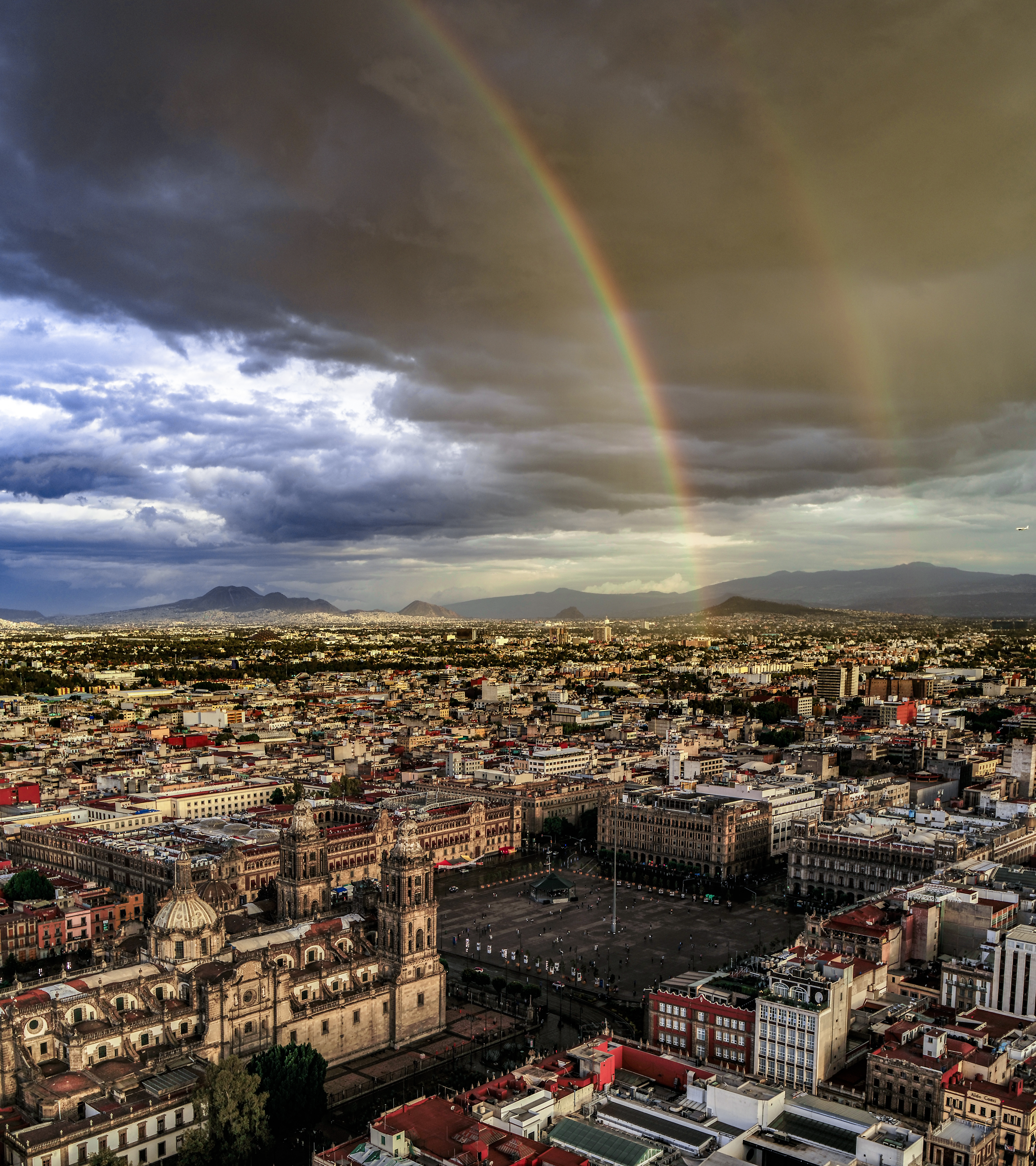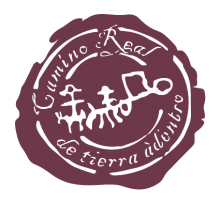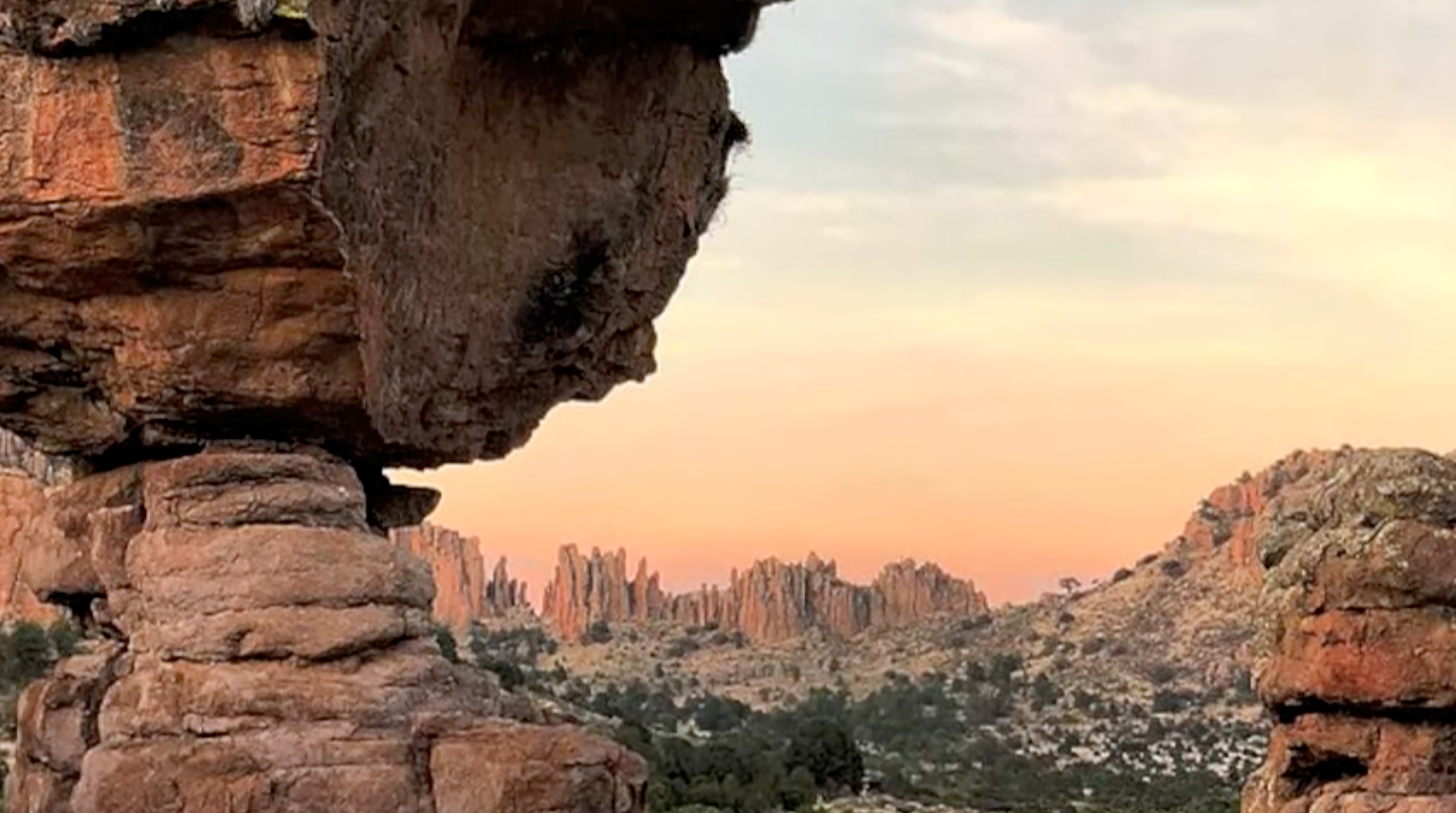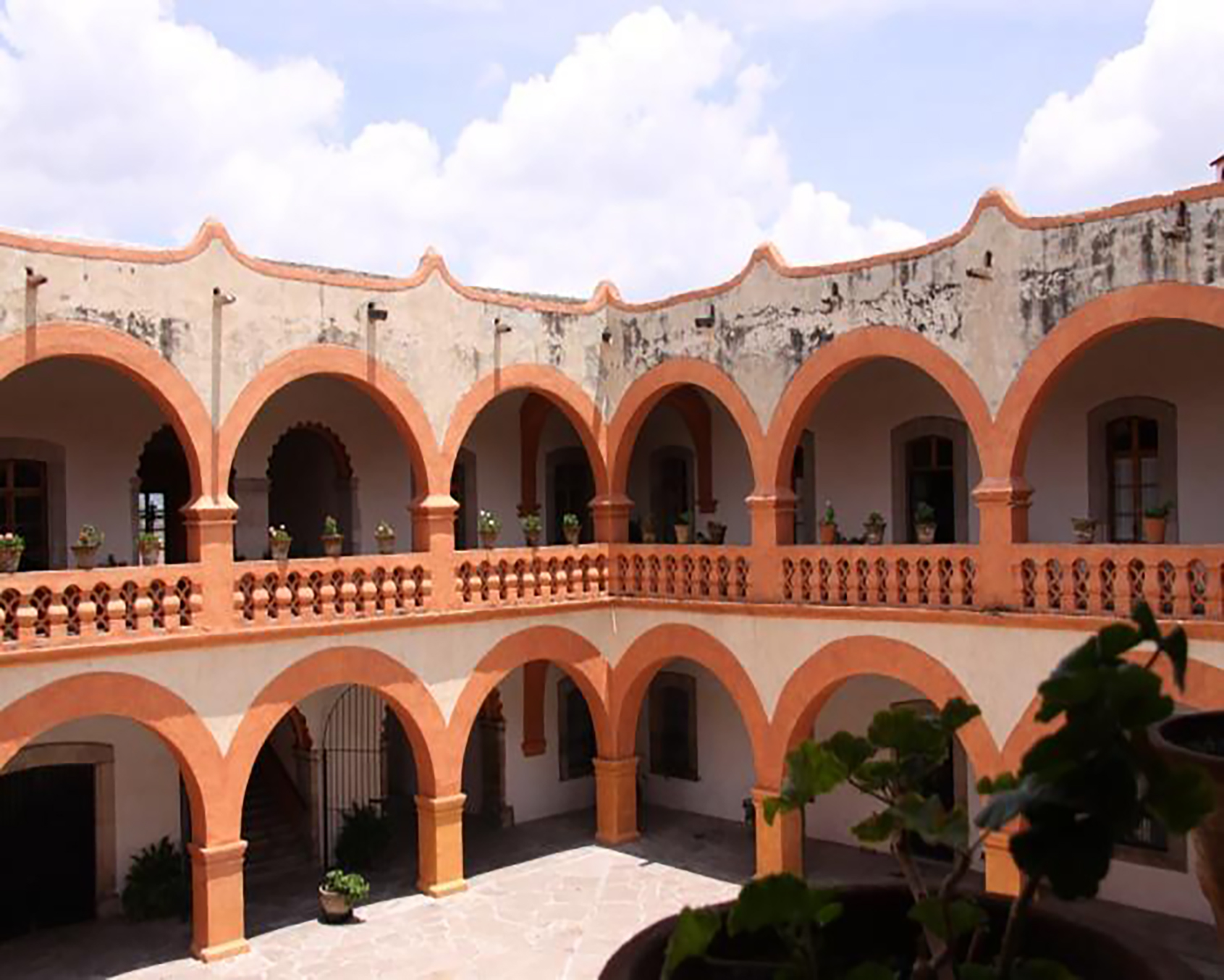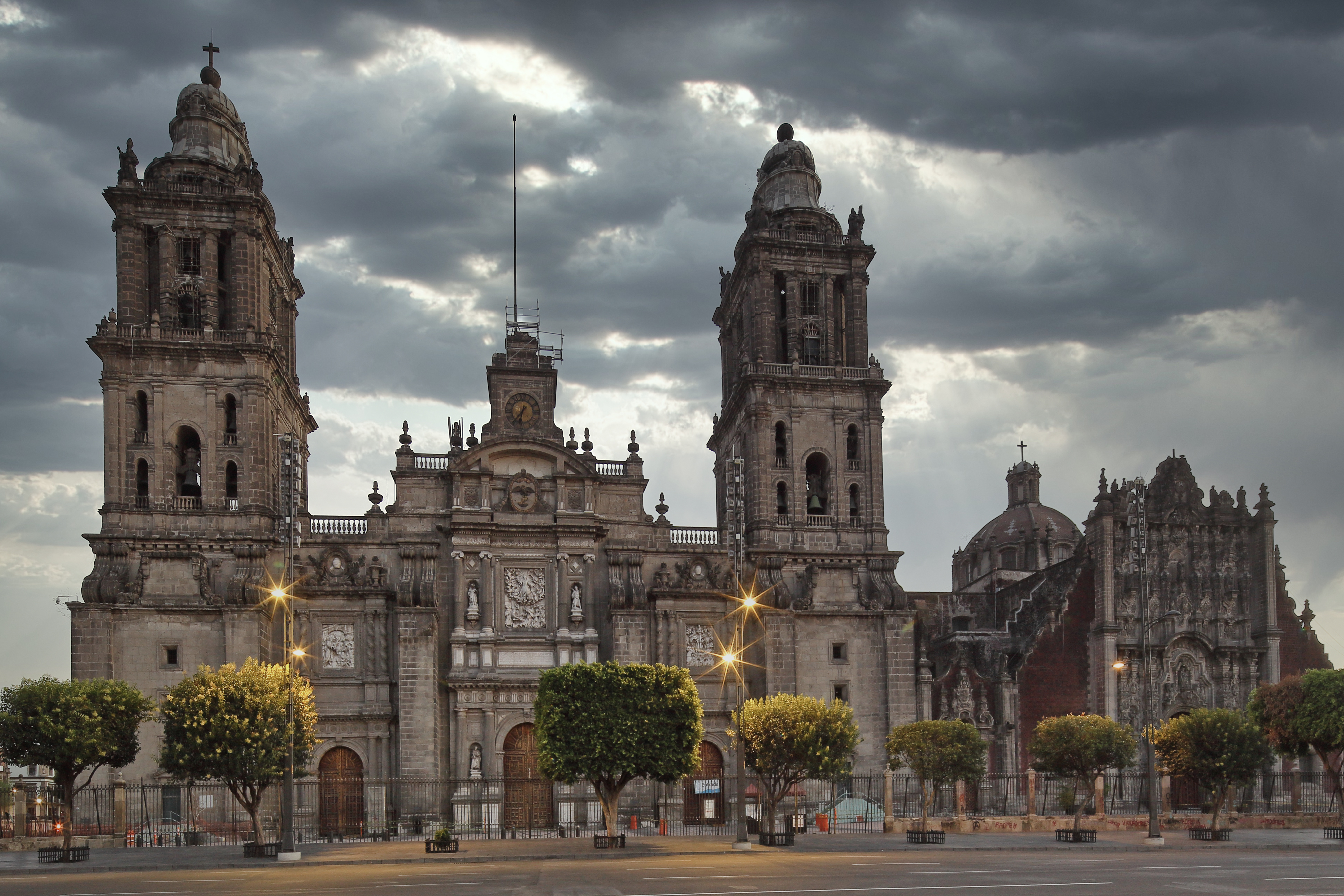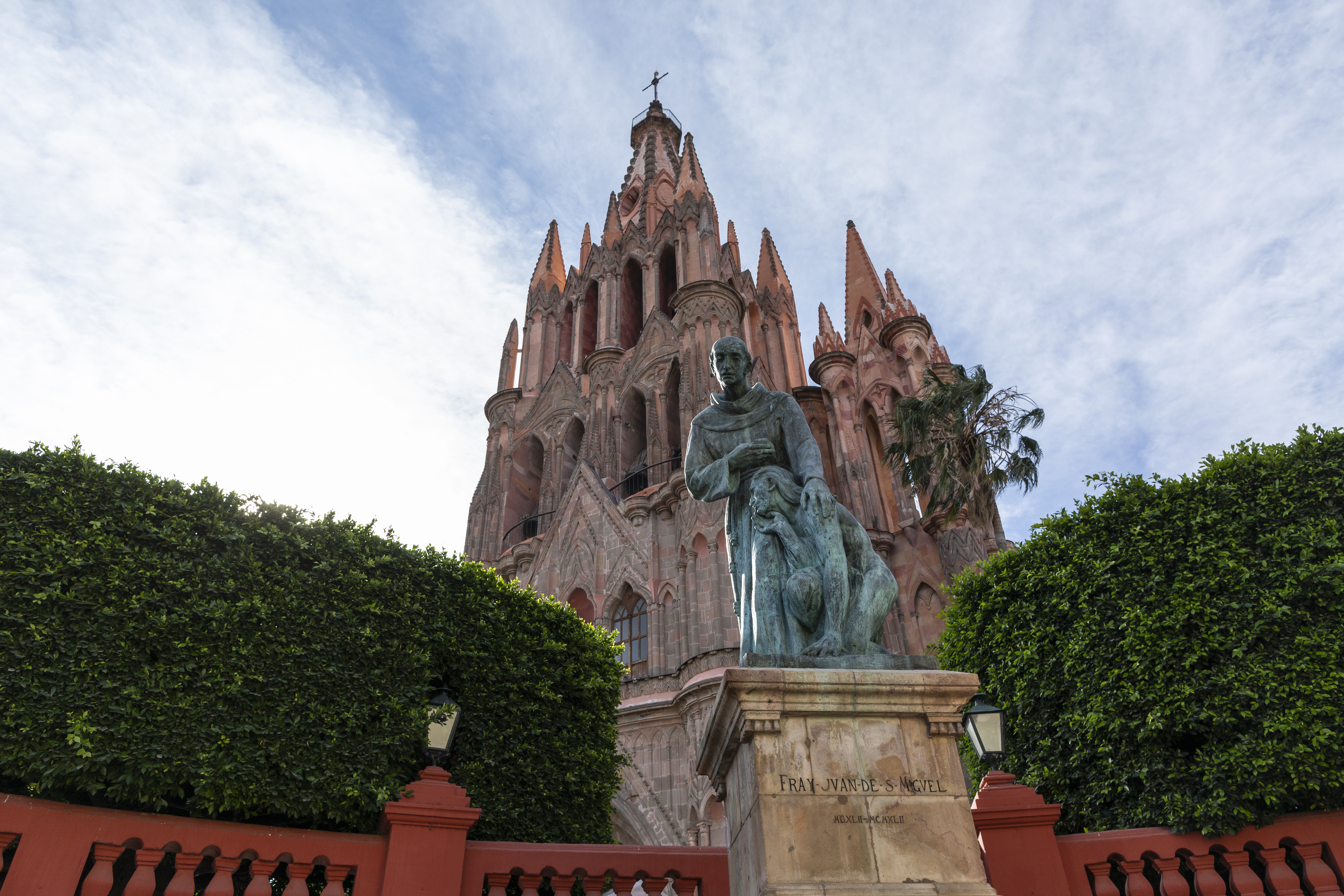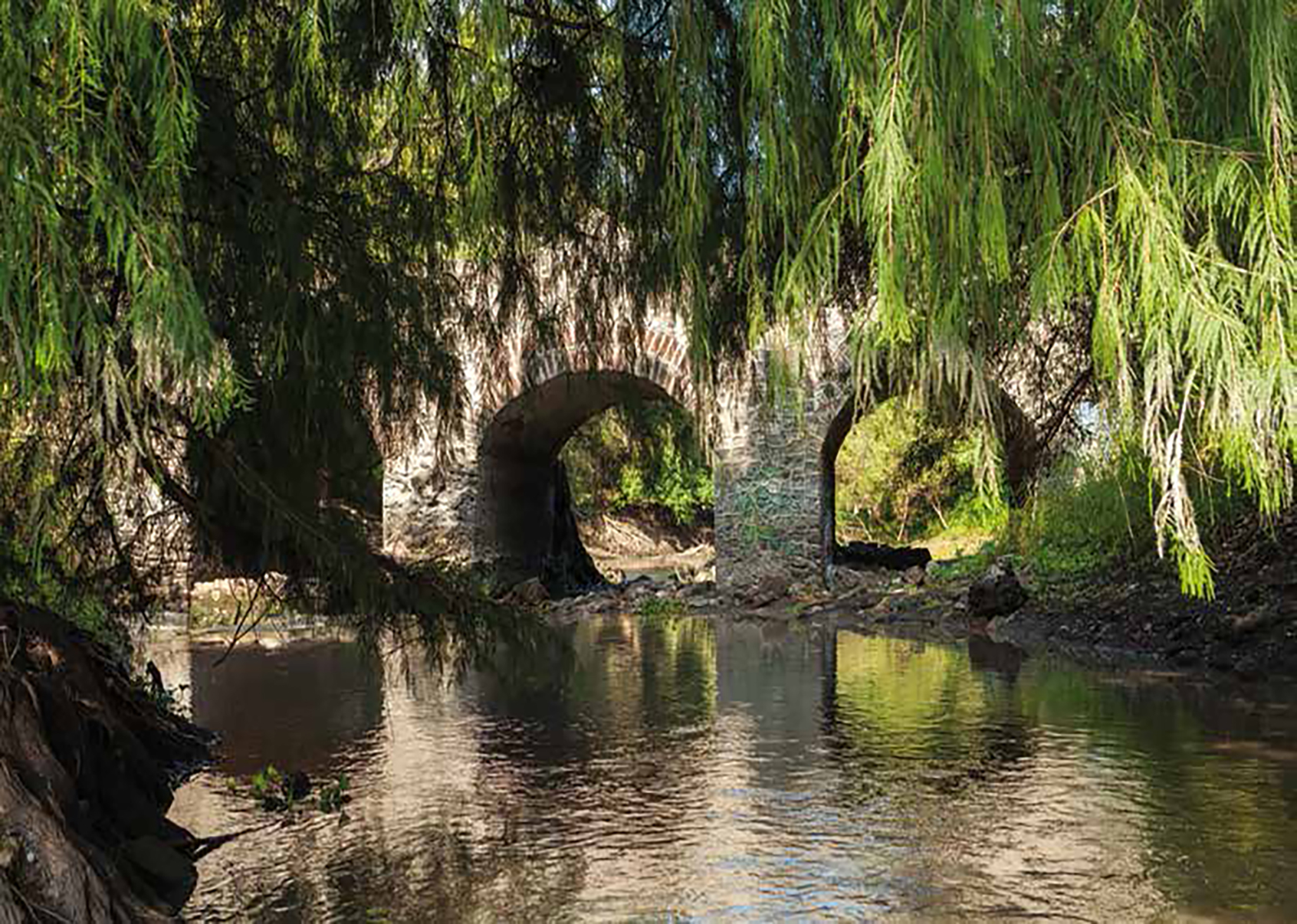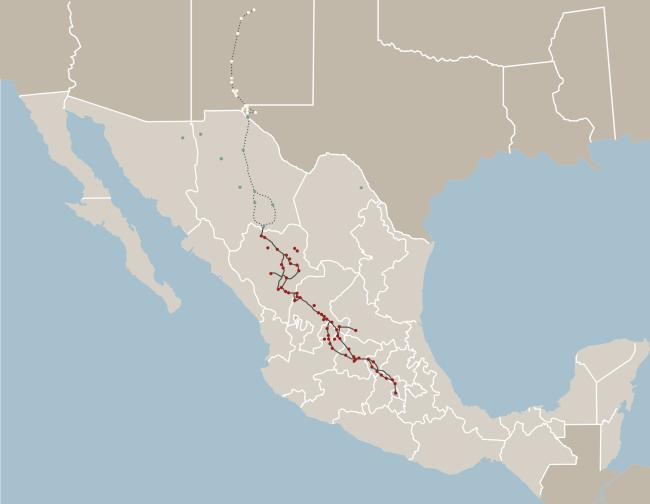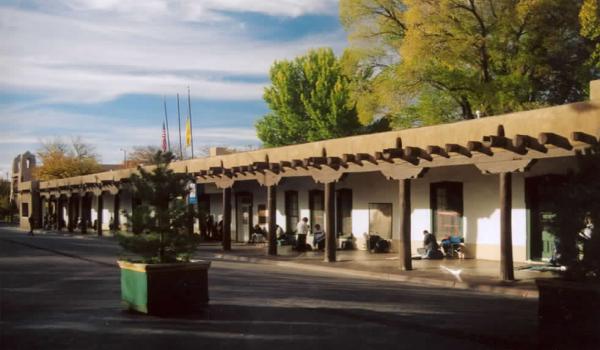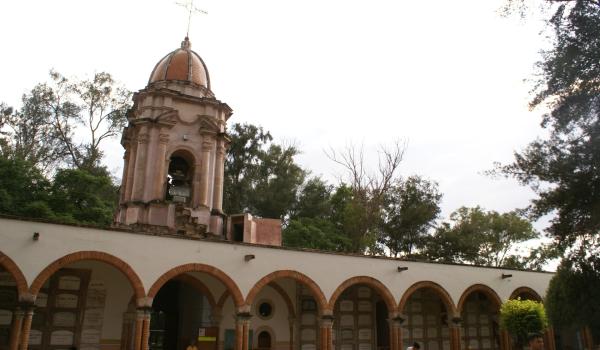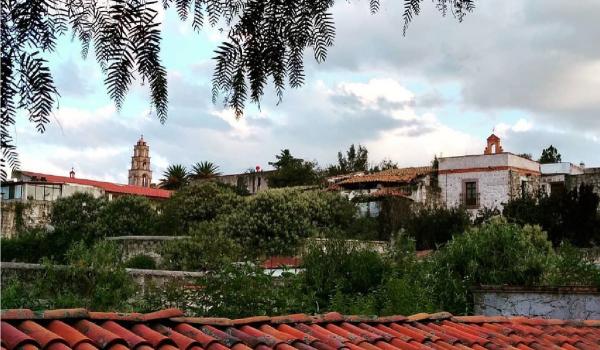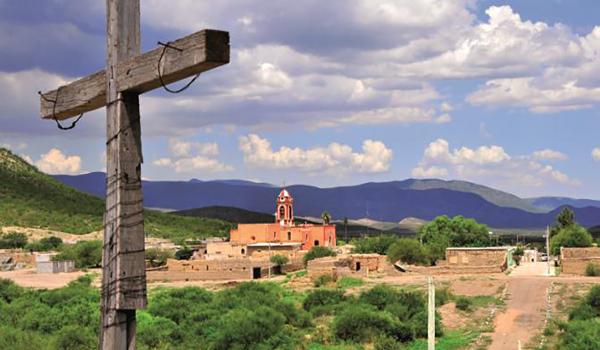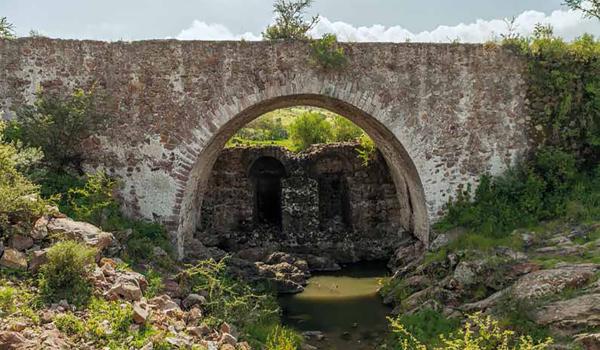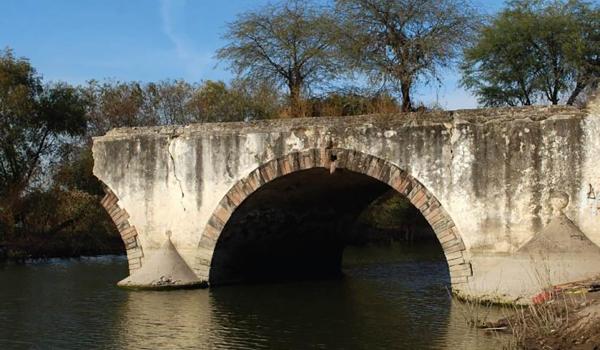For four centuries, the Camino Real de Tierra Adentro served as a geographical and cultural backbone. Although its origins are linked to mining, it fostered the establishment of social, cultural, and religious ties between Hispanic culture and the Amerindian cultures of the north.
Camino Real de Tierra Adentro
The road eventually reached 2,600 kilometers and currently runs through the states of Mexico, Hidalgo, Querétaro, Guanajuato, Jalisco, Aguascalientes, Zacatecas, San Luis Potosí, Durango, and Chihuahua, comprising five World Heritage cities and 55 other sites related to the use of the road, such as bridges, former haciendas, towns and historic centers, a cemetery, former convents, a mountain range, sections of the road, a mine, temples, chapels, and caves.
The first religious ministers for indigenous communities in northern Mexico were Franciscan friars who arrived via the Camino Real de Tierra Adentro at the end of the 16th century. The Spanish, along with some Franciscans and indigenous people from central Mexico, continued north in search of “New Mexico,” the legendary ancestral land of the Mexicas and supposed source of coveted riches for Europeans. The result of this process of expansion northward was the development of mines and the construction of roads and bridges, the establishment of multi-ethnic populations, with complex buildings reflecting a fusion of Spanish and local decoration, which led to the development of a distinctive culture along the route.
The Camino was an extraordinary channel of communication. Silver was the driving force behind the Spanish government's commitment and the settlers' desire to ‘open up’ the northern territory for mining, to establish the necessary settlements for workers, and to build forts, haciendas, and temples. Ultimately, the wealth generated by silver led to massive economic development in Spain and other parts of Europe.
The Camino Real de Tierra Adentro became one of the most important routes linking the Spanish Crown with its northern domains in America. Along the southern part of the itinerary is a collection of sites related to mining and hacienda work, trade, the military, evangelization, and the administrative structure designed to control the immense Spanish North American territory, adapted to the local environment, materials, and technical practices that reflect a remarkable exchange of cultural and religious ideas.
The component parts of the serial nomination illustrate the variety and diversity of functions and physical components that reflect the impact of the Camino Real de Tierra Adentro.

